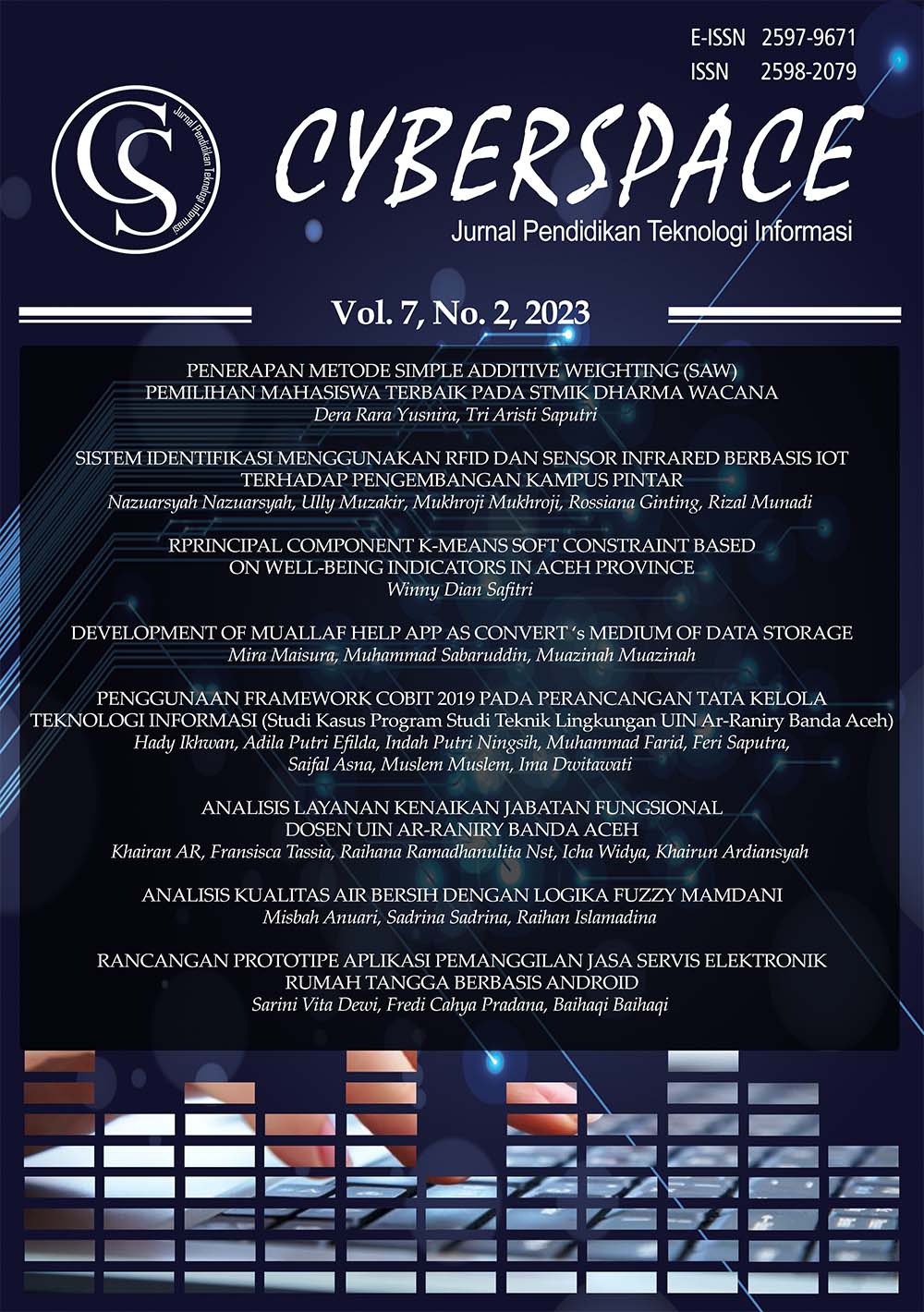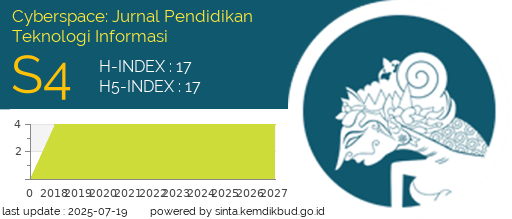SISTEM IDENTIFIKASI MENGGUNAKAN RFID DAN SENSOR INFRARED BERBASIS IOT TERHADAP PENGEMBANGAN KAMPUS PINTAR
DOI:
https://doi.org/10.22373/cj.v7i2.21632Abstract
This study aims to discuss the development of an identification system tool to unlock doors using Radio Frequency Identification (RFID) and infrared sensors based on the Internet of Things (IoT). This research model is the development of prototyping, consisting of several stages, namely the needs analysis stage through interviews with lecturers and education staff, and conducting literature studies on previous research to get more information on this research. The design and design phase of the tool consists of RFID, infrared sensor, relay, and I2C LCD connected to microcontroller. The solenoid lock is connected directly to the relay as output. The test results on the hardware and software side, the average response time of the device to unlock from outside the room using RFID is 1.13 seconds, while the average response time of the tool to unlock from inside the room using infrared is 0.77 seconds. Thus, the results of this study found the average response time of infrared sensors is faster by 0.09 seconds than RFID. This system can be further developed using other access media such as bluetooth devices that are easily found in smartphones.References
Nazuarsyah, U. Muzakir, Mukhroji, R. B. Ginting, and W. Saputra, “Remote IoT Blynk: Suhu dan Penerangan Ruang Laboratorium Keperawatan,” J. Pendidik. Inform. dan Sains, vol. 11, no. 2, pp. 180–188, 2022, doi: 10.31571/saintek.v11i2.4720.
I. Cholissodin, D. Syauqy, D. A. Firmanda, I. Aji, and E. Rahman, “Pengembangan Auto-AI Model Generatif Analisis Kompleksitas Waktu Algoritma untuk Data Multi-Sensor IoT Pada Node-Red Menggunakan Extreme Learning Machine,” J. Teknol. Inf. dan Ilmu Komput., vol. 9, no. 7, pp. 1349–1356, 2022, doi: 10.25126/jtiik.202296738.
Darussalam and A. Goeritno, “Pemanfaatan RFID, Loadcell, dan Sensor Infrared Untuk Miniatur Penukaran Botol Plastik Bekas Darussalam1,” vol. 1, no. 10, pp. 281–291, 2021.
I. U. V Simanjuntak, A. Y. Basuki, and M. Ridlon, “RANCANG BANGUN SISTEM PENGAMANAN PINTU RUMAH TINGGAL MENGGUNAKAN E-KTP DAN MAGNETIC DOOR,” J. Ilm. Teknol. dan Rekayasa, vol. 25, pp. 149–160, 2020.
H. Pratiwia, A. Satyaputrab, and A. Aribowoc, “Purwarupa Sistem Pendataan Pengunjung dan Pengendalian Perangkat Laboratorium Dalam Pengembangan Smart Campus,” vol. 1, no. 1, pp. 50–57, 2017.
A. Lestari and O. Candra, “Sistem Otomasi Pensortiran Barang berbasis Arduino Uno,” vol. 7, no. 1, pp. 27–36, 2021.
L. Suryani et al., “Implementation of Maggot Cage Temperature and Humidity Control Using ESP8266 Based On the Internet of Things,” Rekayasa Sist. dan Teknol. Inf., vol. 5, no. 158, pp. 877–882, 2022.
K. P. Aji, U. Darusalam, N. D. Nathasia, P. Studi, T. Informatika, and U. Nasional, “Perancangan Sistem Presensi Untuk Pegawai Dengan RFID Berbasis IoT Menggunakan NodeMCU ESP8266,” vol. 3, no. 28, pp. 25–32, 2022.
Downloads
Published
Issue
Section
License
Authors who publish with Cyberspace Journal agree to the following terms:
- Authors retain copyright and grant the journal right of first publication with the work simultaneously licensed under a Creative Commons Attribution License that allows others to share the work with an acknowledgement of the work's authorship and initial publication in this journal.
- Authors are able to enter into separate, additional contractual arrangements for the non-exclusive distribution of the journal's published version of the work (e.g., post it to an institutional repository or publish it in a book), with an acknowledgement of its initial publication in this journal.
- Authors are permitted and encouraged to post their work online (e.g., in institutional repositories or on their website) prior to and during the submission process, as it can lead to productive exchanges, as well as earlier and greater citation of published work (See The Effect of Open Access).



















